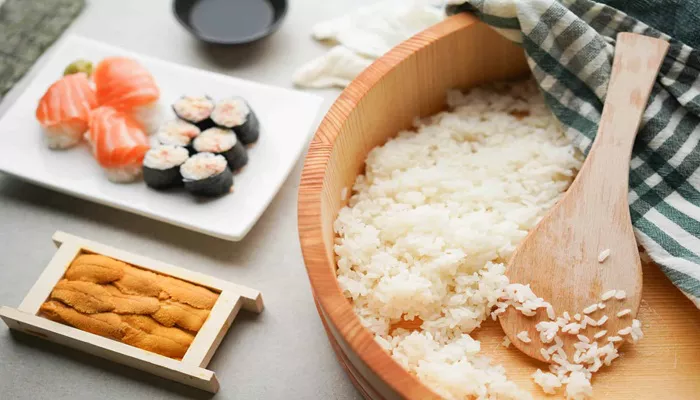Sushi is a beloved dish that has transcended cultural boundaries, becoming a staple in many cuisines around the world. At the heart of sushi lies a critical ingredient: rice. The type of rice used can significantly affect the texture, flavor, and overall quality of the sushi. This article will explore the best types of rice for making sushi, focusing on their characteristics and why they are preferred by sushi chefs.
What Is Sushi Rice?
Sushi rice, known as shari or sumeshi in Japanese, is not just any rice.
It is specifically prepared short-grain rice that is seasoned with vinegar, sugar, and salt after cooking. The ideal sushi rice should have a sticky texture that allows it to hold together when rolled or shaped. This stickiness is essential for maintaining the integrity of sushi rolls and nigiri. Additionally, the rice should be slightly firm yet tender, providing a pleasant mouthfeel that complements the other ingredients in sushi.
Key Characteristics of Ideal Sushi Rice
Stickiness: A sticky texture is crucial for forming sushi rolls and nigiri.
Flavor Absorption: Sushi rice should absorb flavors from vinegars and other ingredients while maintaining its own mild sweetness.
Texture: The cooked rice should be firm enough to hold its shape but soft enough to provide a pleasant chew.
Taste: A subtle sweetness enhances the overall flavor profile of the sushi.
see also: When Does Arby’s Chicken Salad Come Back 2024?
Types of Rice for Sushi
Several varieties of rice are suitable for sushi-making. Here are some of the most popular types:
Koshihikari Rice
Koshihikari is often regarded as the gold standard for sushi rice.
Originating from Japan, particularly in regions like Niigata and Fukushima, Koshihikari rice is known for its exceptional flavor, aroma, and texture.
Characteristics:
- Sticky and firm
- Slightly sweet taste
- Glossy appearance
Koshihikari’s superior quality makes it a favorite among professional sushi chefs and home cooks alike.
Sasanishiki Rice
Sasanishiki is another premium short-grain variety from Japan. It has a slightly less sticky texture than Koshihikari but offers a balanced flavor profile that many sushi enthusiasts appreciate.
Characteristics:
- Mild sweetness
- Good chewiness
- Versatile in flavor pairing
Sasanishiki’s unique qualities make it a popular choice for those looking to experiment with different flavors in their sushi.
Hitomebore Rice
Hitomebore is known for its rich and creamy flavor. This variety enhances the taste of fresh ingredients used in sushi, making it an excellent choice for those who prioritize flavor.
Characteristics:
- Rich flavor
- Firm yet sticky texture
- Excellent flavor absorption
Hitomebore’s ability to complement various fillings makes it a favorite among those who enjoy diverse sushi combinations.
Akitakomachi Rice
Akitakomachi rice hails from Akita Prefecture in Japan. It stands out due to its excellent texture and ability to absorb flavors well.
Characteristics:
- Mildly sweet
- Firm texture
- Glossy appearance
Akitakomachi’s delightful qualities make it suitable for both traditional and innovative sushi preparations.
Calrose Rice
Calrose rice is a medium-grain variety developed in California. While not as traditional as Japanese varieties, it has gained popularity due to its availability and affordability.
Characteristics:
- Slightly sticky
- Mild flavor
- Versatile in use
Calrose rice can be an excellent alternative for those who may not have access to authentic Japanese rice but still want to create delicious sushi at home.
Cooking Sushi Rice: Essential Tips
Once you have selected your preferred type of rice, cooking it properly is crucial for achieving the best results. Here are some essential tips:
Rinse the Rice: Before cooking, rinse the rice under cold water until the water runs clear. This removes excess starch and helps achieve the desired texture.
Use the Right Water Ratio: A general rule of thumb is to use a water-to-rice ratio of about 1.2:1 (1 cup of water for every 0.8 cups of rice). Adjustments may be necessary based on your specific type of rice.
Seasoning: After cooking, mix the rice with a vinegar solution made from rice vinegar, sugar, and salt while fanning it to cool down quickly. This gives sushi rice its distinct flavor.
Let it Rest: Allowing the seasoned rice to rest covered will help improve its texture before using it in sushi preparations.
Conclusion
Choosing the right type of rice is fundamental to creating high-quality sushi. Koshihikari remains the top choice among experts due to its exceptional qualities, but other varieties like Sasanishiki, Hitomebore, Akitakomachi, and even Calrose can also yield delicious results depending on personal preference and availability.
By understanding these different types of sushi rice and how to prepare them correctly, anyone can elevate their sushi-making skills from home-cooked meals to restaurant-quality dishes. Whether you’re rolling maki or shaping nigiri, investing time in selecting and preparing your sushi rice will undoubtedly enhance your culinary experience.
Related topics:
- What Makes Carl’s Jr. Unique Compared to Other Fast Food Chains
- What Time Does Wendy’s Close on Saturday?
- What Chicken Sandwiches Does Burger King Have?

